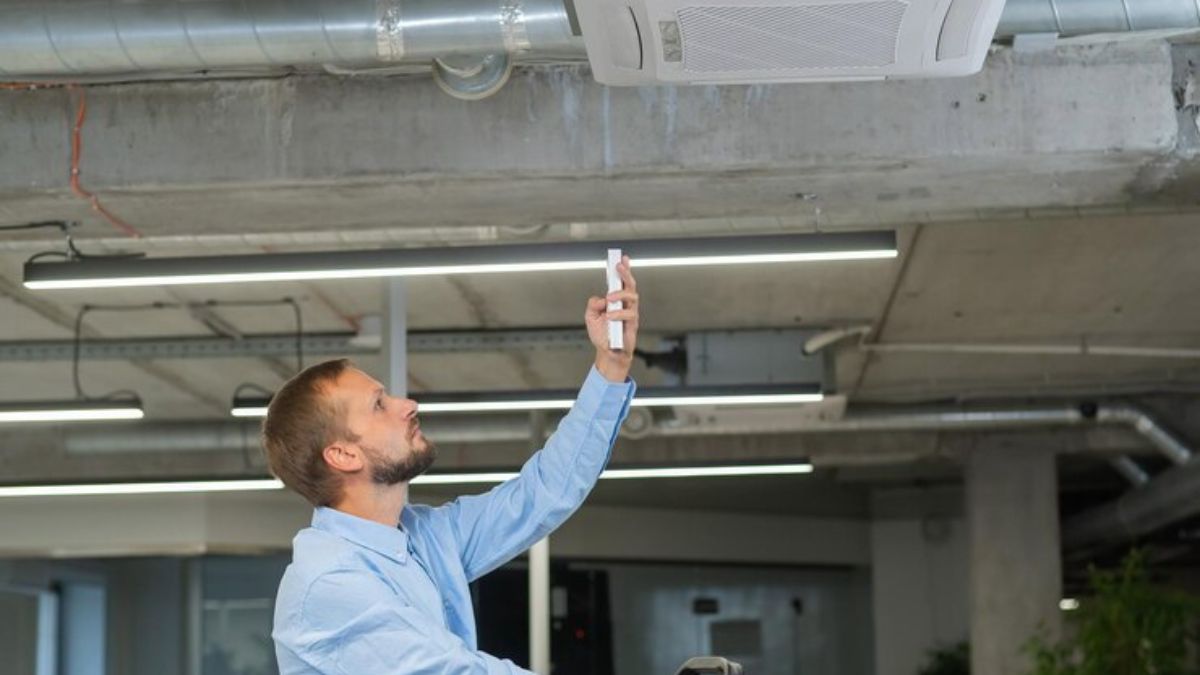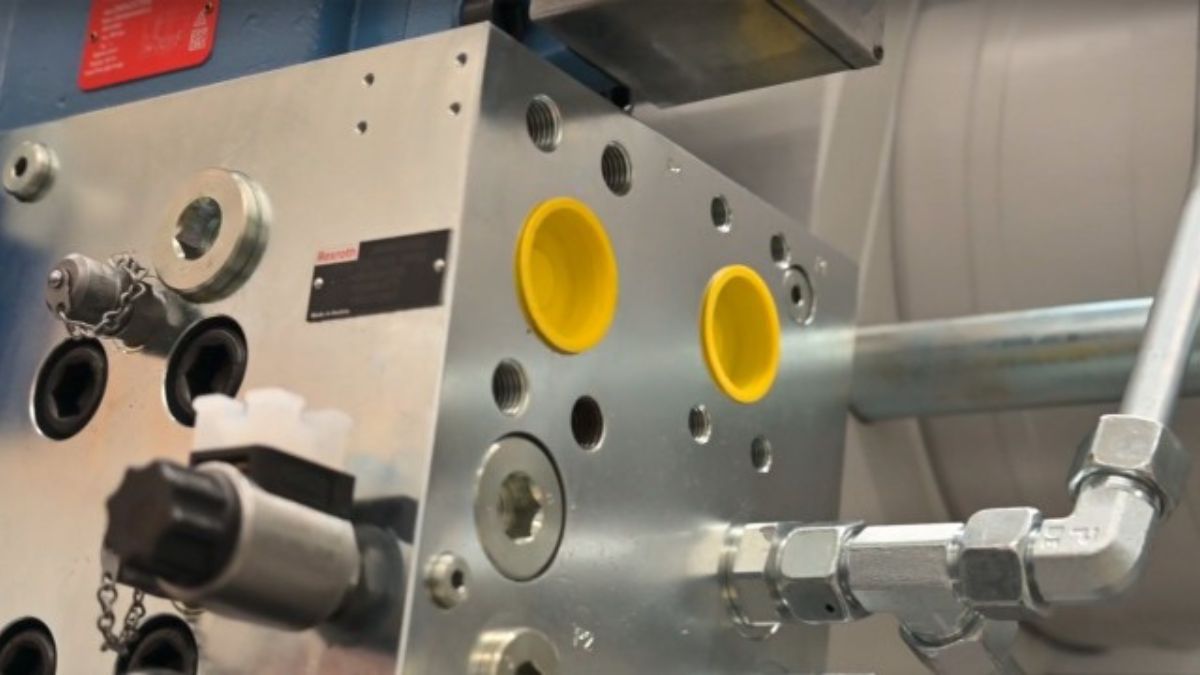TOPIC
Common Air Conditioner Problems and How They’re Fixed

Air conditioners play a vital role in maintaining comfort during warmer months, but like any mechanical system, they are prone to developing problems over time. Whether it’s a residential unit or part of a commercial HVAC system, issues can arise from wear and tear, poor maintenance, or simply aging equipment. Knowing what can go wrong helps you prepare and respond quickly when your cooling system isn’t working. We will explore common air conditioning problems that homeowners and building managers often face and detail how these problems are typically addressed by qualified professionals or experienced technicians.
Frequent Air Conditioner Issues and Their Solutions
-
Inadequate Cooling or No Cooling at All
When an air conditioner fails to cool properly, the underlying issue could be anything from low refrigerant levels to dirty filters or even compressor problems. One of the most common causes is a refrigerant leak. If your AC unit is low on refrigerant, it won’t absorb heat efficiently, resulting in lukewarm airflow. To fix this, technicians usually locate the leak, repair it, and recharge the system with the correct type and amount of refrigerant. Another common cause of poor cooling is a clogged or dirty air filter.
A blocked filter restricts airflow and can cause the evaporator coil to freeze, further reducing performance. Replacing or cleaning the filter every 1–3 months can prevent this issue. In more severe cases, like a failing compressor or capacitor, the unit may need significant parts replaced to restore full functionality. These issues often require timely AC repair to prevent further damage and maintain cooling efficiency.
-
AC Unit Not Turning On
When your air conditioner doesn’t turn on, it can be alarming, especially during a heatwave. One of the first things to check is the thermostat. Sometimes, the issue is as simple as dead batteries or incorrect settings. If the thermostat is functional, the problem may lie in a tripped circuit breaker or a blown fuse in the electrical panel. Resetting the breaker or replacing the fuse can often resolve the issue. However, if the breaker continues to trip, this could indicate a deeper electrical fault within the unit or wiring. Another possibility is a malfunctioning contactor or capacitor in the outdoor unit, which prevents the system from initiating. These electrical components wear out over time and may need to be replaced by a professional to get the unit running again safely.
-
Water Leaks Around the Indoor Unit
If you notice water pooling around your indoor AC unit, it’s likely due to a clogged condensate drain line. This line carries away the moisture that the unit removes from the air. When it becomes blocked with dirt or algae, water backs up into the unit and can leak into your home. A simple solution involves clearing the line using a wet/dry vacuum or flushing it with vinegar. Another reason for water leakage could be a rusted or damaged drain pan that needs replacement. In rare cases, a frozen evaporator coil can also cause water to overflow once it melts. Regular maintenance, including cleaning the coil and drain line, helps prevent leaks and keeps your system running smoothly.
-
Strange Noises from the Unit
Unusual noise from your air conditioning unit is often an early warning sign of a mechanical problem. A grinding or squealing noise might suggest a worn-out belt or motor bearing that needs lubrication or replacement. Banging or rattling sounds often indicate loose parts inside the unit, such as screws or fan blades. Ignoring these noises can lead to more significant damage or even complete system failure. Diagnosing the exact cause typically involves opening the system, inspecting moving parts, and tightening or replacing components as needed. In some cases, noise may also be caused by debris caught in the fan or blower, which can be cleared out with a proper cleaning. Addressing strange sounds early prevents further wear and tear and extends the system’s lifespan.
-
Uneven Cooling Throughout the Space
- If some rooms in your home are significantly cooler than others, it could be due to poor airflow, leaky ducts, or an improperly sized system. Leaky ductwork is a common culprit and results in cool air escaping before it reaches all parts of the home. Sealing the ducts with mastic sealant or replacing damaged sections can dramatically improve air distribution. Another possibility is a malfunctioning thermostat that fails to regulate zones correctly. If your system includes zoning controls, they should also be inspected to ensure they work properly. Sometimes, the issue is as simple as furniture blocking vents or closed dampers in certain rooms. Making sure vents are clear and open can help balance airflow. In other situations, the unit might be too small to effectively cool the entire space, so upgrading to a more appropriately sized unit might be necessary.
Understanding the common problems that affect air conditioners helps homeowners and facility managers address issues before they escalate into costly repairs. While some minor problems like dirty filters or clogged drain lines can be handled through routine maintenance, others, such as electrical faults, refrigerant leaks, or compressor failures, require professional attention to ensure safety and system efficiency. A well-maintained system saves on energy bills and keeps indoor spaces comfortable during peak summer months, and investing in maintenance and repairs is well worth it.
TOPIC
The Advantages of Using Rexroth R902148252/001 in Hydraulic Systems

Introduction to Rexroth R902148252/001
Hydraulic systems are the backbone of many industrial applications, providing power and efficiency in a compact design. Among the myriad components that enhance these systems, one stands out: the Rexroth R902148252/001. This remarkable piece of engineering not only optimizes performance but also ensures reliability across various operations. If you’re seeking to elevate your hydraulic system’s capabilities, understanding what makes this specific component unique is essential. Join us as we dive into its features, benefits, and real-world applications that demonstrate why Rexroth R902148252/001 is a game-changer in hydraulic technology!
Features and Components of R902148252/001
The Rexroth R902148252/001 is engineered with precision. It features a robust construction that guarantees durability and longevity.
One of its standout components is the advanced control technology, providing superior performance in various hydraulic applications. The integration of high-quality sensors enhances responsiveness, ensuring optimal operation.
Its modular design allows for easy customization. This flexibility means it can adapt to diverse system requirements effortlessly.
Additionally, the use of premium materials promotes efficiency while minimizing wear and tear over time. With reduced friction points, this component operates smoothly under pressure.
User-friendly interfaces make troubleshooting straightforward. This aspect reduces downtime, which is crucial for any hydraulic system’s productivity.
Benefits of Using R902148252/001 in Hydraulic Systems
The Rexroth R902148252/001 is a powerhouse in hydraulic systems. Its precision engineering ensures optimal performance, allowing for smoother operations across various applications.
One key benefit is its efficiency. The component helps reduce energy consumption, translating into cost savings over time. This feature is particularly valuable in industries where operational costs are tightly monitored.
Durability stands out as another advantage. Built to withstand harsh conditions, the R902148252/001 minimizes downtime due to maintenance or replacement needs.
Furthermore, compatibility with a range of hydraulic fluids enhances flexibility. Users can adapt it easily to different environments without sacrificing performance reliability.
This unit also supports enhanced control capabilities. Operators can enjoy increased responsiveness and accuracy during system adjustments, leading to better overall outcomes.
Case Studies: Real-world Applications of R902148252/001
Rexroth R902148252/001 has found its place in various industries, showcasing its versatility and reliability. In construction machinery, it enhances hydraulic performance, ensuring smooth operation under heavy loads. Operators appreciate the increased efficiency that translates into time savings on job sites.
In agricultural applications, this component ensures precision control of equipment like tractors and harvesters. Farmers benefit from improved productivity and reduced downtime during critical planting and harvesting seasons.
Another notable case is in the automotive sector, where R902148252/001 plays a crucial role in assembly line automation. It helps maintain optimal pressure levels for seamless operations while reducing energy consumption—a win-win for manufacturers aiming to enhance sustainability practices.
These real-world examples highlight how Rexroth R902148252/001 can drive innovation across diverse sectors while boosting operational effectiveness.
Cost and Maintenance Comparison with Other Hydraulic Systems
When evaluating the cost and maintenance of hydraulic systems, Rexroth R902148252/001 stands out. Its design prioritizes efficiency, which translates into lower operational costs over time.
Maintenance is often a concern for operators. With the R902148252/001, users can expect reduced downtime due to its robust construction. This durability minimizes wear and tear on components, leading to fewer replacements.
In comparison with traditional hydraulic systems, the Rexroth model offers longer intervals between service checks. This means less frequent disruptions in productivity.
Moreover, initial investment costs may be slightly higher; however, this is offset by savings accrued from enhanced performance and longevity. The overall value becomes evident as system owners experience fewer unexpected repairs or part failures.
Choosing the right hydraulic solution involves looking beyond upfront expenses. Evaluating long-term benefits reveals why many industries prefer integrating Rexroth R902148252/001 into their operations.
How to Properly Incorporate R902148252/001 into Your Hydraulic System
When integrating the Rexroth R902148252/001 into your hydraulic system, start with careful planning. Assess your system’s specifications and compatibility to ensure a seamless fit.
Next, position the component in line with flow direction indicators. Proper orientation prevents reverse flow issues that could compromise performance.
Secure all connections using appropriate fittings and seals. This minimizes leakage risks while maximizing efficiency.
Set up control parameters based on manufacturer guidelines. Adjustments may be needed during initial operation for optimal performance.
Regularly monitor pressure levels post-installation to ensure everything functions as intended. Early detection of irregularities can save time and resources down the road.
Provide routine maintenance checks as part of your operational protocol. Keeping parts clean and lubricated will extend the lifespan of both the R902148252/001 and your entire hydraulic system.
Conclusion: Why Rexroth R902148252/001
Rexroth R902148252/001 stands out as a leading choice for hydraulic systems. Its advanced features and robust components enhance efficiency, reliability, and performance across various applications. Users can benefit from improved responsiveness and durability when incorporating this component into their systems.
The real-world case studies demonstrate its effectiveness in diverse industries, showcasing how it tackles complex challenges with ease. Additionally, the cost savings associated with lower maintenance needs make it an attractive option compared to other hydraulic solutions.
For those looking to upgrade or optimize their hydraulic systems, the Rexroth R902148252/001 offers compelling advantages that cannot be overlooked. It proves itself not just as a part but as a vital contributor to enhanced operational success. Adopting this technology may lead to significant improvements in productivity and longevity of equipment over time.
TOPIC
Exploring the Concept of Pulsamento: Rhythm in Life and Art

Introduction to Pulsamento
Have you ever found yourself tapping your foot to a catchy beat or losing track of time while painting? This instinctive response to rhythm is part of a profound concept known as pulsamento. It intertwines the cadence of life with artistic expression, creating a captivating tapestry that resonates through our daily experiences. From the gentle heartbeat of nature to the structured rhythms in music and art, pulsamento influences us in ways we might not even realize. Join me on this journey as we explore how this intriguing concept shapes our lives and inspires creativity across various mediums. Let’s discover the power of rhythm together!
The Origins and Evolution of Pulsamento
The concept of pulsamento traces back to ancient philosophies that celebrated rhythm as a fundamental aspect of existence. Cultures around the world recognized patterns in nature, from the changing seasons to the cycles of life and death.
In classical music, composers like Bach and Beethoven infused their works with intricate rhythms. These pieces reflected both emotional depth and structural balance—key elements of pulsamento.
As time progressed, artists began exploring this idea across multiple mediums. The Impressionists captured transient moments in visual art through light and movement. Dancers embraced fluidity, embodying rhythm through physical expression.
Pulsamento evolved into a lens for understanding not just art but also human experience itself. It became an essential element for connecting various disciplines—from science to psychology—showing how intrinsic rhythm is in shaping our lives.
Pulsamento in Everyday Life: How Rhythm Affects Us
Pulsamento weaves through the fabric of our daily existence. From the soft hum of morning birds to the rhythmic beat of a favorite song, these patterns shape our mood and energy.
Consider how your heart races with excitement or slows in moments of calm. This inner rhythm mirrors external stimuli, guiding us through life’s dance.
Even mundane tasks have their own pulse—a steady cadence when washing dishes or typing away at work can bring a sense of flow. It creates an unconscious harmony that makes each action feel more meaningful.
Social interactions are also influenced by pulsamento. Conversations ebb and flow like music; pauses add depth while laughter punctuates connection.
As we navigate busy streets or enjoy quiet evenings, recognizing these rhythms helps cultivate mindfulness. Embracing this awareness enhances our experiences, allowing us to resonate with each moment fully.
Pulsamento in Art: Examples from Different Mediums
Pulsamento manifests beautifully across various art forms, infusing them with rhythm and energy. In music, composers like Bach and Stravinsky harness pulsation to create dynamic compositions that resonate deeply with listeners. The heartbeat of their melodies invites an emotional response, drawing audiences into a captivating experience.
In visual arts, artists such as Wassily Kandinsky utilize color and form to convey rhythm. His abstract works pulse with movement, leading the eye in a dance across the canvas. The interplay of shapes creates a sense of balance that echoes the concept of pulsamento.
Dance embodies this idea physically; each step reflects life’s inherent rhythms. Choreographers design sequences that mirror natural patterns found in everyday life—each gesture echoing pulses felt within us all.
Even literature captures pulsamento through rhythmic prose or poetic meter, crafting an auditory experience that engages readers on multiple levels. Through these mediums, we explore how rhythm colors our existence and inspires creativity.
The Importance of Balance and Harmony in Pulsamento
Balance and harmony are essential components of pulsamento. They create a foundation for rhythm to thrive, whether in music, dance, or everyday life.
When elements blend seamlessly, the energy flows more freely. This synergy enhances our experiences and elevates our emotions. A well-balanced pulse captivates the senses.
In art, balance allows each element to coexist without overshadowing others. Every brushstroke or note has its place within the larger composition. It is this delicate interplay that captures the viewer’s attention.
Similarly, in daily routines, finding balance can foster mental clarity and emotional stability. When tasks align with personal values and passions, life’s rhythm becomes more enriching.
Harmony invites us to connect deeply with both ourselves and those around us. It creates a space where creativity flourishes and relationships deepen through shared experiences of rhythm in motion.
Incorporating Pulsamento into Your Daily Routine
Incorporating pulsamento into your daily life can be transformative. Start by tuning into the natural rhythms around you. Notice the sounds of nature, the beat of your footsteps, or even the flow of your breath.
Establish a morning routine that reflects this rhythm. Whether it’s through stretching, meditation, or simply enjoying a cup of tea in silence, these moments create a foundation for balance.
Throughout your day, integrate short breaks to reconnect with that pulse. A brief walk outside or listening to music can help ground you and rejuvenate your spirit.
Engage in creative activities too; doodle while brainstorming ideas or dance freely to express how you’re feeling inside. These practices foster awareness and keep you aligned with life’s ebb and flow.
Consider journaling about your experiences with pulsamento each day. Reflecting on these moments deepens understanding and appreciation for rhythm’s role in shaping our lives.
Conclusion: Embracing the Rhythm of Life through Pulsamento
Embracing the rhythm of life through pulsamento opens up a world of possibilities. This concept encourages us to recognize and appreciate the rhythms that exist all around us. By tuning into these natural beats, we can enhance our experiences in both daily routines and artistic expressions.
Understanding pulsamento helps us find balance amid the chaos. It teaches us to flow with life’s ebb and flow rather than resist it. Whether it’s through dance, music, or even breathing techniques, incorporating this rhythm can lead to a more harmonious existence.
By being mindful of how pulsamento manifests in various aspects of life—be it nature’s cycles, human interactions, or creative pursuits—we cultivate deeper connections with ourselves and others. Every heartbeat is an invitation to embrace this rhythmic journey.
As you explore your own relationship with pulsamento, consider ways to infuse it into your life. Dance when you feel joy; create art that reflects your emotions; breathe deeply when faced with challenges. These simple acts form a profound connection between you and the pulse of existence itself.
So go ahead—listen for those underlying rhythms that guide you each day. Allow them to inspire creativity and foster resilience as you navigate through life’s ever-changing landscape.
TOPIC
Top 5 Most Engaging Discussions in PopCultureChat Reddit Community

Introduction to PopCultureChat Reddit Community
Welcome to the vibrant world of PopCultureChat, a Reddit community where fans from all walks of life unite to discuss everything under the pop culture sun. Whether you’re obsessed with the latest blockbuster film, deeply invested in trending TV shows, or have an affinity for niche music genres, this subreddit serves as your ultimate sanctuary. With thousands of passionate members contributing their thoughts and insights daily, it’s no wonder that some threads spark captivating conversations that linger long after they’ve been posted. Here are five standout discussions from PopCultureChat that not only entertained but also ignited meaningful dialogue among its members. Let’s dive into the heart of what makes this community so special!
Thread 1:
One of the most captivating threads in the PopCultureChat Reddit community revolved around the cultural impact of classic sitcoms. Users reminisced about their favorite shows, sharing personal stories and how these series shaped their childhoods.
The discussion sparked a vibrant debate about what made these sitcoms timeless. Some highlighted character development, while others focused on iconic catchphrases that still resonate today. The warmth and nostalgia were palpable as members shared clips that brought back fond memories.
Participants also explored how humor has evolved over time, comparing old favorites to modern hits. This led to an engaging dialogue on whether today’s comedies can capture the same essence as those from decades past.
What stood out was the sense of camaraderie among members, united by a shared love for television history. Each comment added depth, creating a lively tapestry woven with laughter and reflection.
Thread 2:
One of the standout discussions in the PopCultureChat Reddit community revolved around the impact of nostalgia on modern film and television. Members shared their thoughts on how reboots and remakes often tap into childhood memories, sparking vibrant conversations.
Many users expressed both excitement and skepticism about these trends. Some celebrated familiar characters returning to screens, while others lamented a lack of originality in storytelling. The debate was lively, with passionate arguments highlighting various perspectives.
Several threads branched out from this topic. Users began sharing their favorite nostalgic shows that deserved a reboot or sequel. Others reminisced about iconic moments that shaped pop culture in past decades.
This thread showcased not just opinions but also encouraged members to revisit cherished media—bridging generational gaps through shared experiences. Such dialogues enrich the community’s understanding of cultural influences over time.
Thread 3:
Thread 3 sparked vibrant debates around the latest superhero movie release. Fans flooded in with opinions, critiques, and wild theories.
One user passionately dissected character arcs, highlighting unexpected twists that left viewers breathless. Others chimed in, sharing their own interpretations of pivotal scenes. The conversation quickly morphed into a deep dive into comic book lore.
Amidst the analysis, memes and fan art emerged as contributors added layers of humor to their discussions. Some even crafted alternate endings that took the plot down unforeseen paths.
The enthusiasm was palpable as users bonded over shared experiences at midnight screenings. Threads like this showcase how pop culture transcends mere entertainment; it fosters community connections and inspires creativity among its members.
Thread 4:
One of the standout threads in the PopCultureChat Reddit community focused on fan theories surrounding iconic movies. Users passionately dissected various plot lines, exploring alternate endings and character motivations that could have changed everything.
The creativity was astounding. Some users proposed theories connecting seemingly unrelated films through shared themes or characters. Others dove into minute details, analyzing dialogues for hidden meanings that might have slipped past casual viewers.
This thread sparked lively debates, with members defending their perspectives while also displaying a mutual respect for differing opinions. It became a treasure trove of insights and imaginative ideas.
Key moments from classic films were reexamined under fresh lenses. The engagement level soared as fans rallied around their favorite flicks, showcasing how influential narratives can inspire endless discussion within an enthusiastic community devoted to pop culture exploration.
Thread 5:
One of the most vibrant discussions in the PopCultureChat Reddit community revolved around “The Best Movie Soundtracks.”
Users shared their personal favorites, diving deep into what makes a soundtrack truly memorable. Some highlighted classics like *The Lion King* and its unforgettable songs. Others took a more modern approach, advocating for films like *Guardians of the Galaxy*, which revived retro tracks with new energy.
What stood out was how soundtracks often evoke nostalgia. Members reminisced about movie moments that struck them emotionally, all tied to those tunes. The connections formed were palpable; music has a unique way of weaving itself into our life stories.
Debates sparked over whether scores should be included alongside vocal performances. This led to passionate arguments about composers like Hans Zimmer versus iconic artists such as Queen or Adele contributing to film magic.
This thread not only showcased musical talent but also reflected on how deeply intertwined sound is with visual storytelling.
Conclusion: The Importance of Online Communities for Discuss
Online communities like PopCultureChat Reddit play a crucial role in connecting fans and sparking discussions. They provide a platform for individuals to share their thoughts, experiences, and insights about various aspects of pop culture. Whether it’s movies, TV shows, music, or books, these forums allow people from different backgrounds to engage in meaningful conversations.
The threads mentioned earlier highlight the diversity of topics that can captivate users’ attention. Engaging discussions foster a sense of belonging and community among members. It’s not just about expressing opinions; it’s also about learning from others and diving deeper into shared interests.
These online spaces empower voices that might otherwise go unheard in mainstream discourse. The vibrant exchange of ideas enriches our understanding of popular culture while creating connections that transcend geographical boundaries.
As more people turn to platforms like Reddit for entertainment news and debates, the importance of such communities will only grow stronger. They serve as modern-day salons where enthusiasts can gather virtually to dissect their favorite content together—a testament to the power of collective fandom today.
-

 TECHNOLOGY6 months ago
TECHNOLOGY6 months agoTop 10 Must-Read Stories from Kristen Archives You Can’t Miss
-

 TECHNOLOGY12 months ago
TECHNOLOGY12 months agoSky Bri Net Worth Revealed: How She Built Her Financial Empire
-

 TOPIC1 year ago
TOPIC1 year agoBasement Renovation Contractors: How They Tackle Structural Issues During Renovations
-

 TOPIC8 months ago
TOPIC8 months ago5 Reasons the //Vital-Mag.Net Blog Dominates Lifestyle
-

 TOPIC7 months ago
TOPIC7 months agoTop 10 Articles from the ://Vital-Mag.net Blog That You Can’t Miss
-

 CRYPTO10 months ago
CRYPTO10 months agoCrypto30x.com Review: Is It the Right Platform for You?
-

 BUSINESS6 months ago
BUSINESS6 months agoTraceLoans Explained What You Need to Know
-

 BEAUTY1 year ago
BEAUTY1 year agoRevitalize Your Hair with Oribe Hair Care for Damaged Hair: Style It with Blue Dresses for Weddings and Events
